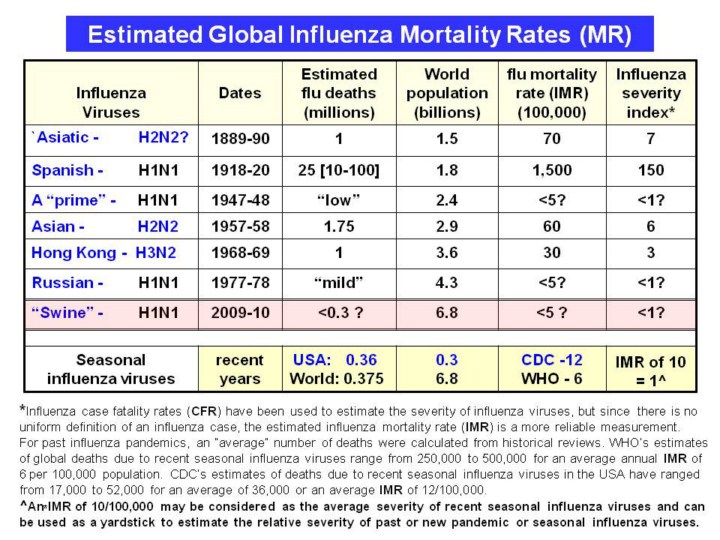| front |1 |2 |3 |4 |5 |6 |7 |8 |9 |10 |11 |12 |13 |14 |15 |16 |17 |18 |19 |20 |21 |22 |23 |24 |25 |26 |review |
 |
Estimates of influenza case fatality rates (CFR) are difficult to use to compare the severity of influenza viruses because the definition of a “case” of influenza is not well defined and can range from all infections to only those infected persons who are hospitalized. Estimates of the influenza mortality rate (IMR) of past pandemics and recent “seasonal” influenza viruses can provide a more objective yardstick to assess the relative severity of any new influenza virus. However, at the outset or beginning of any new influenza pandemic, the severity of the new influenza virus is unknown. This makes it impossible to estimate: (1) How severe any new or “novel” virus may be compared to prior influenza viruses; and (2) What impact, if any, public health interventions, whose effectiveness are also not clearly defined, may have on a new influenza pandemic. Even with all of the vagaries of estimating the severity of influenza pandemics, it is quite clear that the 1918 “Spanish-flu” pandemic was the most severe influenza pandemic by from 1-2 orders of magnitude! |